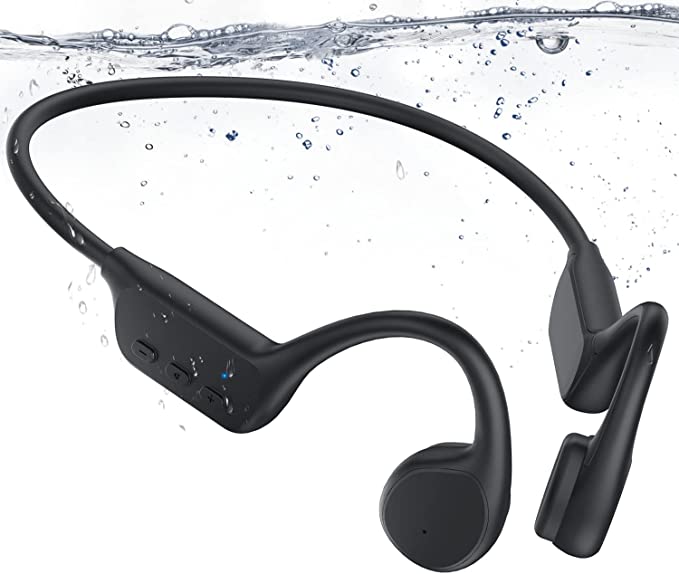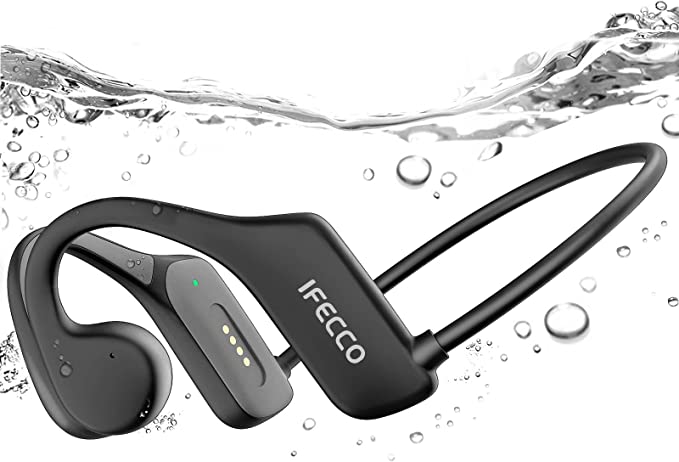The Unheard Symphony: From Beethoven's Jaw to Underwater Audio, The Secret Science of Bone Conduction
Update on Oct. 20, 2025, 6:52 a.m.
The world was dissolving into silence for Ludwig van Beethoven. By his late 40s, the great composer, a man whose very soul was woven from sound, could barely hear the orchestras performing his own masterpieces. In the desperate, quiet twilight of his hearing, he discovered a strange new way to perceive his music. He would clamp a metal conducting rod between his teeth and press the other end to his piano’s soundboard. As he played, the vibrations bypassed his failing eardrums, traveling directly through his jawbone to the inner ear. In that moment, Beethoven wasn’t just composing; he was pioneering a technology that would one day allow an athlete to hear a symphony in the middle of a silent pool.

What Beethoven had stumbled upon was not magic, but a profound and often overlooked biological truth: our ears are not the only gateway for sound. To understand his secret, we first need to reimagine our own skull. Think of it not just as a protective helmet for the brain, but as a surprisingly efficient sound conductor—a biological tuning fork.
Normally, we hear through a process called air conduction. Sound waves travel through the air, are funneled into our ear canal, and vibrate the eardrum. These vibrations are then passed through a series of tiny bones to the cochlea, the spiral-shaped, fluid-filled organ in the inner ear that finally translates them into electrical signals for the brain. It’s an intricate and brilliant system, but it’s not the only one. Bone conduction offers a direct shortcut. Instead of traveling through the air and the outer ear, vibrations are applied directly to the bones of the head—typically the cheekbones or jaw. These vibrations travel through the solid structure of the skull, arriving at the same destination—the cochlea—without ever bothering with the eardrum.
This explains a common yet puzzling phenomenon: why do we often cringe at the sound of our own voice on a recording? When we speak, we hear ourselves through a combination of air conduction (the sound leaving our mouth and entering our ears) and bone conduction (the vibrations of our vocal cords traveling through our skull). This internal, bone-conducted sound has a lower frequency, giving our voice a richness and depth that only we can perceive. A recording, which captures only the air-conducted sound, sounds unnervingly thin and high-pitched by comparison. It’s the sound of our voice stripped of its secret, bony bassline.

For decades after Beethoven, this principle of bypassing the eardrum remained a niche medical curiosity. It led to the development of early bone-conduction hearing aids in the 20th century, offering a lifeline to individuals with conductive hearing loss—damage to the outer or middle ear that prevents sound from reaching the cochlea. But its applications soon expanded beyond the realm of healing. In the high-stakes environments of military operations, soldiers needed to receive commands without blocking out the crucial ambient sounds of the battlefield. Bone conduction headsets, which leave the ears completely open, became an invaluable tool. They allowed for clear communication while maintaining full situational awareness, a concept that would prove to be revolutionary when it finally entered the consumer market.
For decades, this remarkable technology remained in the specialized worlds of medicine and the military. But what happens when a tool of necessity becomes a tool of lifestyle? What happens when you take the principle that helped a soldier hear orders on the battlefield and apply it to the silent, solitary world of a swimmer’s lap lane? This is where modern devices like the IFECCO X5 Bone Conduction Headphones enter the story. They represent the democratization of this once-specialized technology. By placing small transducers on the cheekbones, they deliver audio directly to the inner ear, leaving the ear canals completely open.
For a runner or cyclist, the benefit is immediate and obvious: they can enjoy a podcast or music while remaining acutely aware of approaching traffic, a ringing bicycle bell, or a pedestrian’s warning. It’s a re-integration of our digital soundscapes with the physical world, a move away from the isolating bubble of traditional headphones. But for a swimmer, the application is even more profound. It solves a fundamental problem of physics that has long condemned swimming to be an audio-free activity. Here, bone conduction isn’t just about safety; it’s about possibility.
The final piece of the puzzle is how these headphones function in an environment actively hostile to most electronics. The answer lies in a combination of clever engineering—a robust IP68 waterproof rating to protect the internal components, and a built-in MP3 player to bypass the near-impossibility of transmitting Bluetooth signals through water.
From a deaf composer’s desperate yearning for a single note to an athlete pacing their laps to a propulsive beat, the story of bone conduction is a testament to human ingenuity. It’s a rediscovery of our own bodies, a realization that our skeletons are not just scaffolds but resonant instruments capable of carrying sound. This technology does more than just let us listen to music in new places; it offers a form of sensory extension. It allows our brain to process two distinct streams of auditory information simultaneously—the music vibrating through our bones and the world flowing into our open ears. It’s a quiet revolution, expanding the very definition of what it means to listen.









